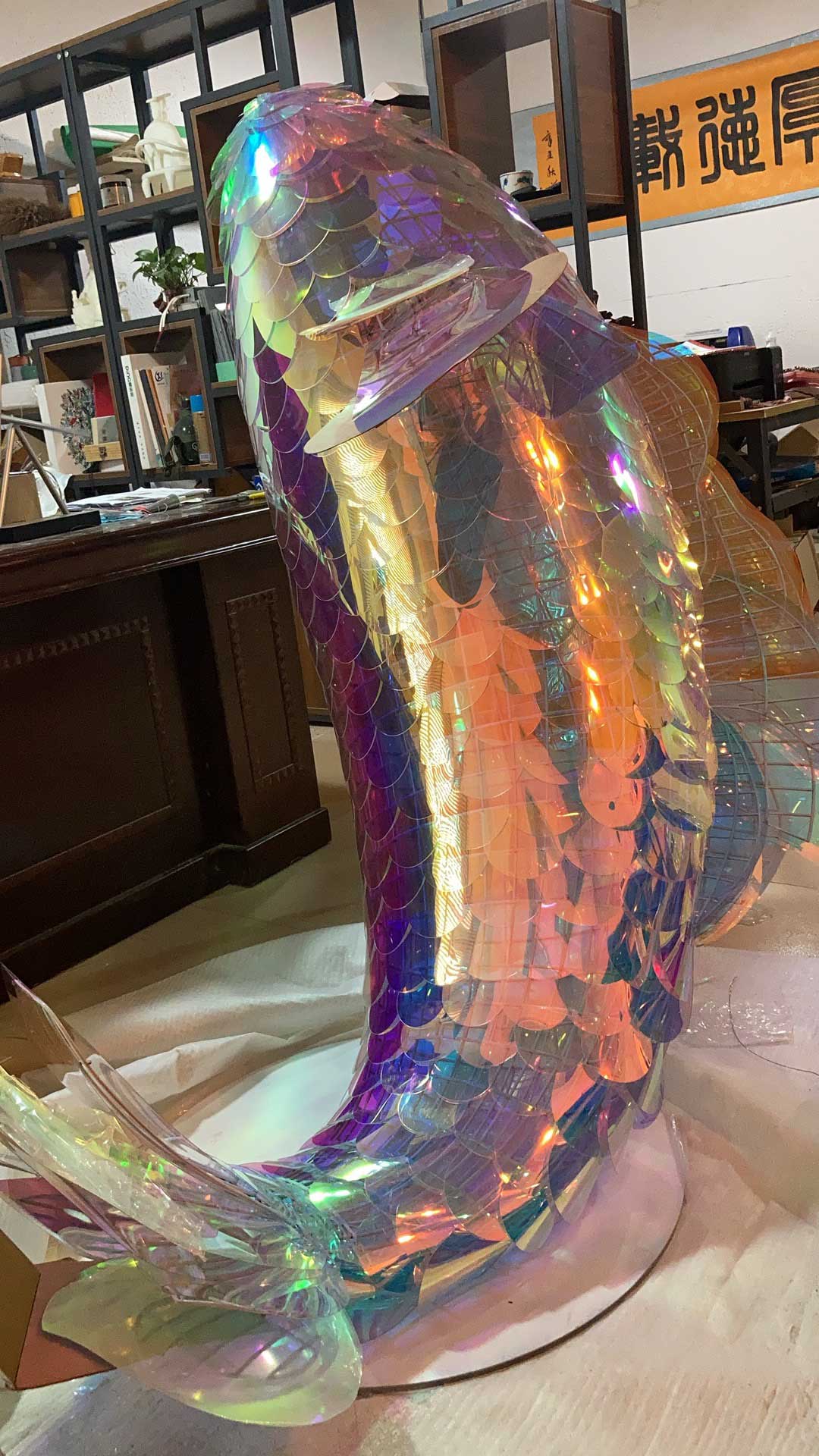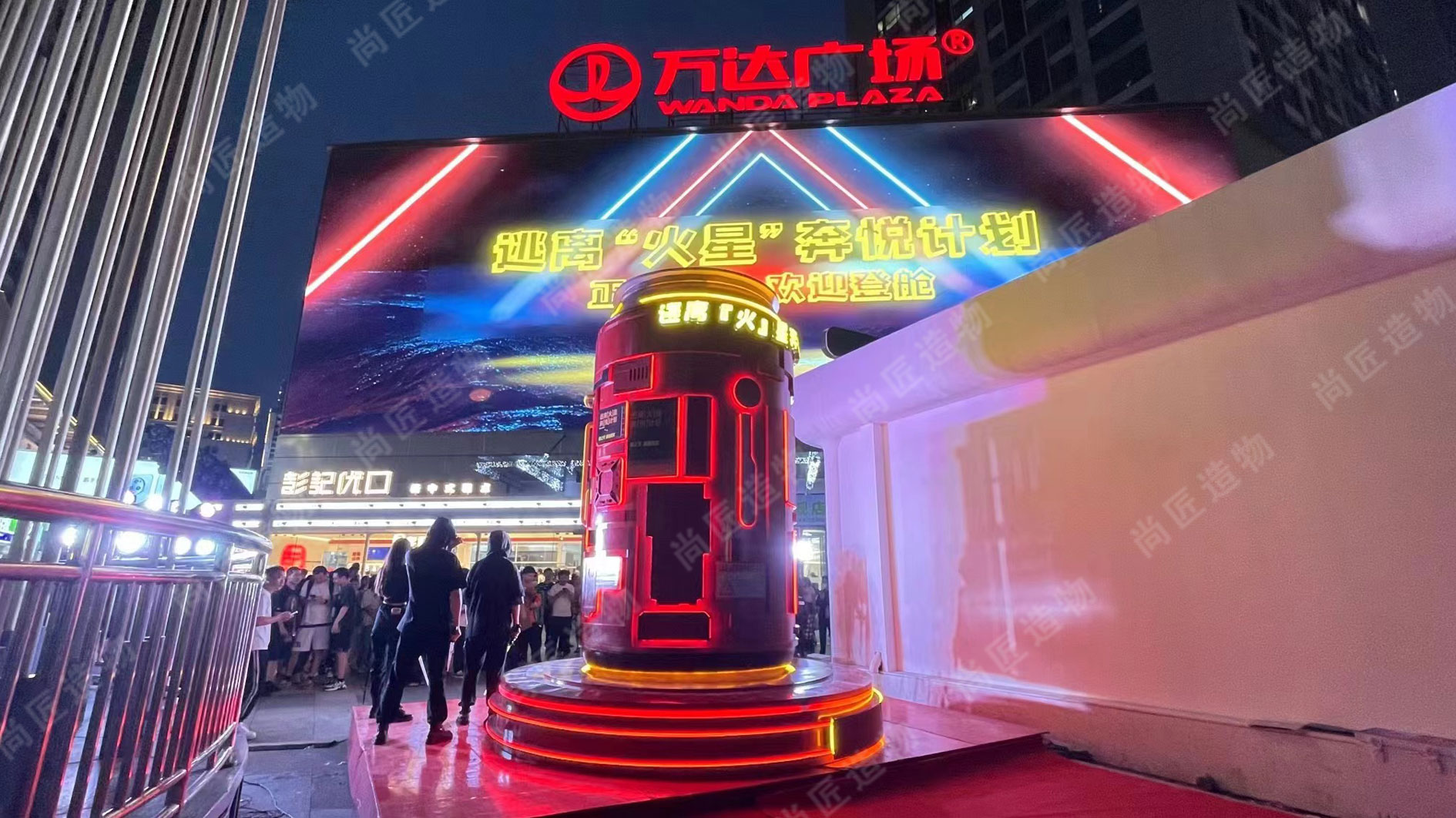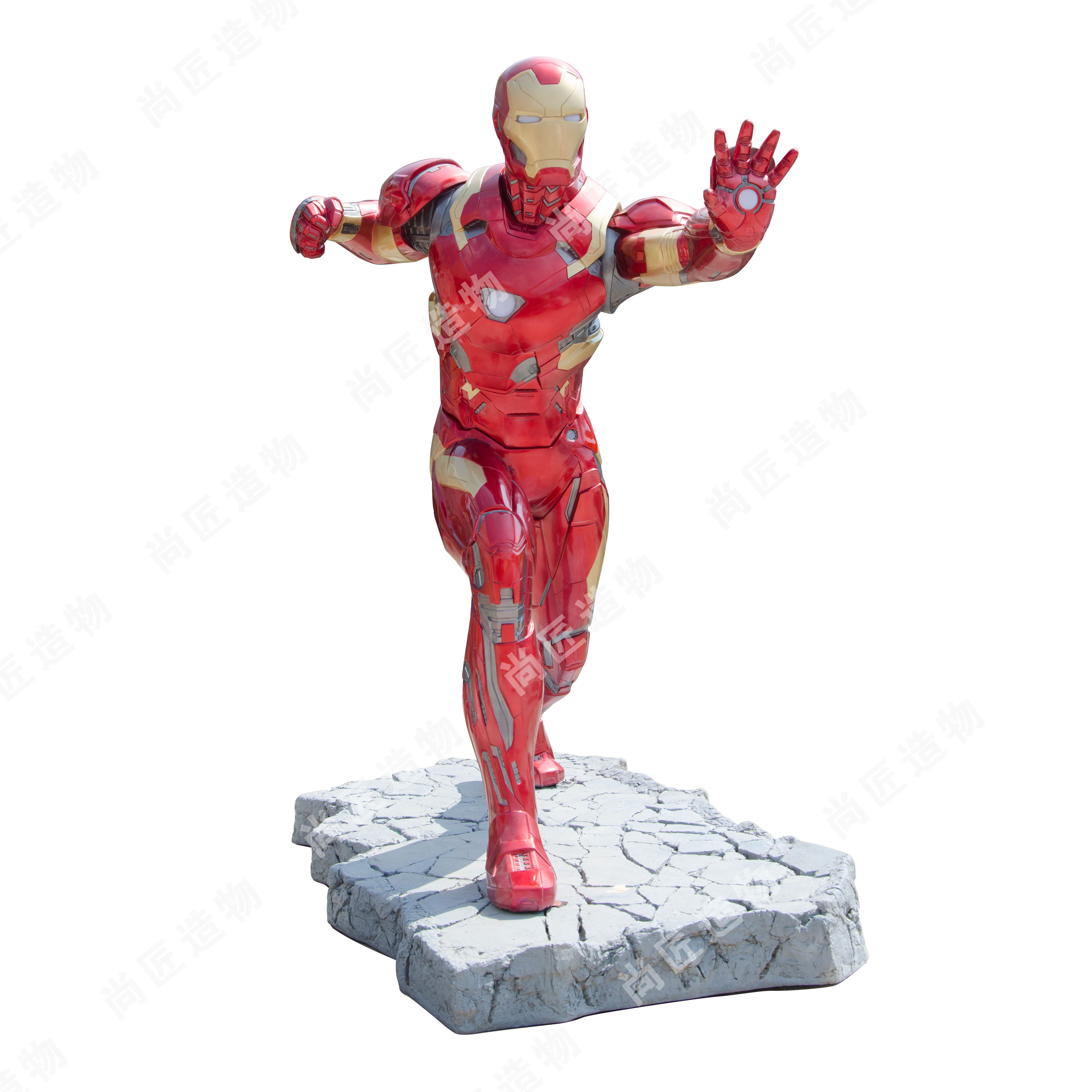Key Takeaways
Mechanized sculpture installations blend precision engineering with artistic vision, requiring a foundational understanding of kinetic principles and material adaptability. Central to these creations is the integration of animatronic mechanics—gears, motors, and sensors—to achieve controlled, rhythmic motion.
Tip: Start with modular designs to simplify troubleshooting and adjustments during prototyping.
Repurposed materials, such as salvaged metal or reclaimed industrial parts, not only reduce costs but also add historical texture to installations. Case studies like Whiting’s Mechanical Theater demonstrate how combining analog systems with modern automation can create mesmerizing performances. Meanwhile, Herbie Hancock’s Rockit video innovations highlight the role of music-synchronized movement in enhancing audience engagement.
Design Insight: “Motion should serve the narrative of the sculpture, not overshadow it.” – Adapted from Whiting’s design philosophy.
For stages, prioritize scalability: lightweight components ensure portability, while robust frames withstand repetitive motion. Steampunk aesthetics, with exposed gears and weathered finishes, remain popular but require weather-resistant treatments for outdoor use. Always balance technical complexity with visual clarity to maintain the artwork’s accessibility.
Transitioning from concept to reality hinges on iterative testing—refine motion sequences and material interactions early to avoid costly revisions. This approach ensures installations remain both mechanically sound and artistically cohesive.

Kinetic Sculpture Engineering Fundamentals
Kinetic sculpture installations merge mechanical precision with artistic vision, requiring a foundational understanding of motion mechanics and material behavior. At its core, this discipline balances force distribution, torque calculations, and energy efficiency to ensure seamless movement. Key components include gear systems (spur, worm, planetary), linkage mechanisms (four-bar, cam-follower), and actuator types (pneumatic, electric, hydraulic). For example, a 10:1 gear ratio might reduce motor strain while amplifying rotational speed for dramatic visual effects.
Structural integrity remains critical—materials like aluminum alloys or carbon fiber composites offer lightweight durability, while 3D-printed polymers enable rapid prototyping. Engineers often use finite element analysis (FEA) software to simulate stress points, ensuring installations withstand repetitive motion cycles.
| Component | Function | Example Use Case |
|---|---|---|
| Servo Motor | Precise angular control | Articulated limb movements |
| Linear Actuator | Straight-line motion generation | Elevating sculpture segments |
| Bearings | Reduce friction in rotating parts | Axle support for spinning elements |
Integrating control systems like Arduino or Raspberry Pi allows programmable choreography, syncing movements to music or lighting cues. Notably, IP character sculpture designs often leverage these principles to achieve lifelike gestures. As kinetic art evolves, interdisciplinary collaboration between engineers and artists continues to refine the balance between technical reliability and aesthetic impact—a precursor to exploring advanced animatronic mechanics.
Animatronic Mechanics for Dynamic Artworks
Modern mechanized sculptures rely on animatronic systems to achieve lifelike motion, blending engineering precision with artistic intent. These systems often incorporate servo motors, pneumatic actuators, or linear drives to control movement patterns, synchronized through programmable logic controllers (https://en.artmovr.com/) techniques demonstrate how simplified joint mechanisms can evoke character-driven motion without excessive technical overhead.
Sensor integration—such as accelerometers or infrared proximity detectors—enables responsive interactions between installations and performers, creating adaptive stage dynamics. Artists often layer these systems to mimic organic rhythms, like the subtle sway of foliage or avian wingbeats, while maintaining structural integrity under repetitive motion stress. This approach aligns with theatrical design principles where durability meets aesthetic fluidity, ensuring installations withstand rigorous use without compromising visual impact. By merging industrial automation standards with sculptural craftsmanship, animatronic mechanics transform static artworks into narrative-driven kinetic experiences, seamlessly bridging the gap between technical execution and artistic vision.
Repurposed Materials in Moving Installations
Integrating repurposed materials into kinetic sculptures transforms discarded objects into dynamic storytelling tools while addressing sustainability challenges. Industrial components like salvaged gears, bicycle chains, or decommissioned machinery parts often serve as structural foundations, their weathered textures adding visual grit to mechanized art. For example, Fiberglass sculpture techniques can be adapted using fragmented automotive panels, combining lightweight durability with organic shapes. Artists frequently pair these materials with low-voltage motors or pneumatic systems, ensuring motion remains energy-efficient without compromising reliability.
This approach not only reduces waste but also injects historical narratives—a retired factory conveyor belt repurposed as a rotating stage element evokes industrial heritage, while retrofitted typewriter keys might mimic percussive rhythms. Careful material selection balances aesthetics with mechanical demands: aluminum sheets offer malleability for curved forms, while stainless steel bearings ensure smooth articulation. By reimagining everyday objects as kinetic components, creators bridge functional engineering with poetic reinvention, setting the stage for exploring advanced design strategies in subsequent sections.
Whiting’s Mechanical Theater Design Strategies
Central to Whiting’s approach is the integration of modular mechanical systems, enabling sculptures to adapt to varying stage dimensions and performance requirements. By prioritizing scalable frameworks, his designs employ lightweight yet durable components, such as stainless steel sculpture elements, which resist corrosion while maintaining structural integrity under repetitive motion. Key to this strategy is the use of programmable motion controllers, synchronized with hydraulic or pneumatic actuators, to achieve precise choreography—a technique evident in installations where geometric forms transition between rigid and fluid states.
Whiting’s work emphasizes collaborative prototyping, blending animatronic engineering principles with theatrical timing. For instance, interlocking gear systems are calibrated to minimize noise pollution, ensuring mechanical movements harmonize with ambient soundscapes. This methodology also incorporates fail-safes, such as torque limiters and emergency brake mechanisms, to protect both artwork and performers during live interactions. By repurposing industrial salvage—discussed in earlier sections—his designs balance aesthetic innovation with functional reliability, creating kinetic installations that evolve alongside dynamic stage narratives. These strategies not only reflect engineering rigor but also align with broader themes of kinetic art fusion, setting the stage for subsequent explorations of music-driven mechanization.

Herbie Hancock’s Rockit-Inspired Kinetic Tech
The fusion of music and mechanized motion reached a cultural milestone with Herbie Hancock’s 1983 Rockit video, which showcased avant-garde robotics synchronized to experimental jazz. This groundbreaking visual narrative highlighted how industrial components—gears, pistons, and servo motors—could transcend functional roles to become rhythmic storytellers. Building on Whiting’s Mechanical Theater principles, Rockit’s designers repurposed discarded machinery into limb-like structures that mirrored human gestures, creating a dialogue between analog mechanics and electronic soundscapes.
Central to this innovation was the use of programmable logic controllers (https://en.artmovr.com/) installations. By integrating MIDI triggers with hydraulic actuators, artists could translate audio waveforms into precise mechanical responses, a method later adapted for theatrical stage designs. The video’s legacy lies in its proof that mechanical systems, when paired with artistic intent, can evoke emotional resonance—a concept driving modern kinetic art’s shift from static displays to dynamic, audience-responsive experiences. This approach bridges animatronic engineering with performative aesthetics, setting the stage for steampunk-inspired adaptations discussed in subsequent sections.
Crafting Steampunk Sculptures for Stages
Steampunk sculptures merge Victorian-era aesthetics with industrial mechanics, creating visually striking stage elements that evoke retro-futurism. These installations often incorporate brass, copper, and repurposed machine parts—think gears, pistons, and clockwork mechanisms—to achieve their signature weathered, functional-art look. To ensure movement aligns with theatrical narratives, artists integrate simple animatronic systems, such as pulley networks or motorized joints, which allow sculptures to rotate, tilt, or emit simulated steam. A key challenge lies in balancing weight distribution, especially when using salvaged metals, to prevent strain on stage infrastructure.
Designers frequently draw inspiration from historical machinery and Realistic sculpture techniques to anchor fantastical designs in tangible detail. For example, a sculpted automaton might feature articulated limbs powered by discreet servo motors, hidden within its riveted framework. Weathering techniques, like acid patination or controlled rusting, add authenticity while ensuring materials remain stage-safe. Collaboration with lighting technicians is critical, as directional spotlights enhance metallic textures and amplify kinetic motion. By blending analog mechanics with subtle automation, these sculptures become dynamic set pieces that bridge mechanical engineering and theatrical storytelling.
Kinetic Art Fusion: Engineering Meets Aesthetics
The intersection of mechanical engineering and artistic vision transforms static sculptures into living stage elements, where motion becomes an extension of expression. This fusion requires meticulous planning to balance structural integrity with visual impact—gears and actuators must operate silently while maintaining rhythmic fluidity, and materials like oxidized steel or polished brass should enhance both durability and aesthetic coherence. Artists often collaborate with engineers to refine torque calculations and pivot points, ensuring movements align with the artwork’s narrative. For instance, Whiting’s Mechanical Theater demonstrates how industrial components can evoke emotion through precise choreography, while Herbie Hancock’s Rockit innovations highlight the dramatic potential of unexpected mechanical interactions.
A critical challenge lies in harmonizing technical constraints with creative intent. Repurposed materials, such as salvaged clock mechanisms or automotive parts, introduce organic textures but demand adaptive engineering to prevent mechanical failure. The result is a symbiotic relationship where form follows function, yet neither dominates—a steampunk-inspired armature might rotate asymmetrically to cast dynamic shadows, blending physics with poetic storytelling. By treating motion as a design element rather than an add-on, creators develop installations where engineering solutions amplify artistic themes, inviting audiences to perceive machinery as a medium rather than just a tool.

Scalable Mechanized Installation Prototyping
Building on principles of kinetic engineering and material reuse, scalable prototyping focuses on creating adaptable frameworks that balance structural integrity with modular expansion. Designers often begin with lightweight, interchangeable components—such as aluminum joints or 3D-printed gears—to test motion sequences without compromising durability. By standardizing connection points, these systems allow for incremental additions, whether extending a sculpture’s rotational axis or integrating secondary kinetic layers.
Iterative testing plays a critical role, with small-scale models verifying load distribution and energy efficiency before full assembly. For instance, repurposed industrial belts or bicycle chains might initially drive a prototype’s movement, later replaced by silent stepper motors for stage-ready refinement. This phased approach reduces material waste while ensuring mechanical reliability across varying installation sizes, from gallery displays to arena-sized productions.
Transitioning from concept to execution, digital tools like parametric modeling software help predict stress points in dynamic configurations, ensuring seamless scalability. Such methodologies not only streamline production timelines but also enable artists to replicate or adapt successful mechanisms for future projects, maintaining artistic coherence without sacrificing technical precision.

Conclusion
The creation of mechanized sculpture installations for dynamic stages demands a synthesis of technical precision and artistic vision. By grounding designs in kinetic engineering principles—such as gear synchronization, load distribution, and motion calibration—artists ensure mechanical reliability while preserving aesthetic intent. Case studies from experimental theaters and music-driven visual spectacles demonstrate how repurposed industrial components, when paired with animatronic systems, can transform static materials into narratives of motion. These installations thrive when artists balance innovation with practicality, iterating through scaled prototypes to test structural integrity and audience engagement. As the field evolves, the interplay between analog mechanics and digital control systems continues to redefine possibilities for stagecraft, inviting creators to explore uncharted intersections of art and machinery. Ultimately, the success of such works hinges on maintaining dialogue between engineers and artists, ensuring that every whirring cog and sweeping armature serves both function and story.
Frequently Asked Questions
What materials work best for mechanized sculpture installations?
Durable metals like steel and aluminum are ideal for structural components, while lightweight plastics or repurposed industrial scraps add aesthetic flexibility. Recycled gears, motors, and electronic parts from discarded machinery can reduce costs while enhancing sustainability.
How do animatronic engineering principles apply to kinetic sculptures?
Animatronics integrate motion control systems, such as servo motors and pneumatic actuators, to create precise, repeatable movements. These systems are often paired with programmable microcontrollers like Arduino or Raspberry Pi to synchronize motion with audio or lighting cues.
What inspired the fusion of art and mechanics in modern installations?
Historical precedents like Whiting’s Mechanical Theater, which combined clockwork mechanisms with theatrical storytelling, laid the groundwork. Later innovations, such as the robotic stage elements in Herbie Hancock’s Rockit video, demonstrated how mechanical systems could amplify artistic expression.
Can steampunk aesthetics coexist with functional engineering?
Yes—steampunk designs often incorporate visible gears, brass fittings, and weathered finishes. These elements can mask modern components like wiring or sensors while maintaining a cohesive vintage-industrial visual theme.
How do artists ensure reliability in large-scale installations?
Modular prototyping allows testing individual components before final assembly. Using standardized parts simplifies repairs, while weather-resistant coatings and routine maintenance checks prevent corrosion or mechanical failures in dynamic environments.
What role does scalability play in kinetic sculpture design?
Scalable designs enable adaptations for different venues, from intimate galleries to outdoor festivals. Techniques like sectional construction or adjustable motion ranges ensure installations remain versatile without compromising structural integrity.
 ch
ch English
English






